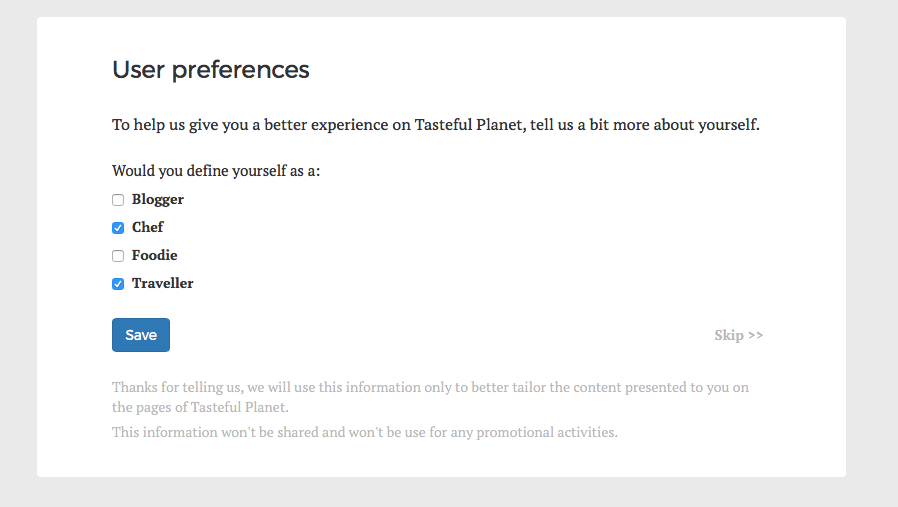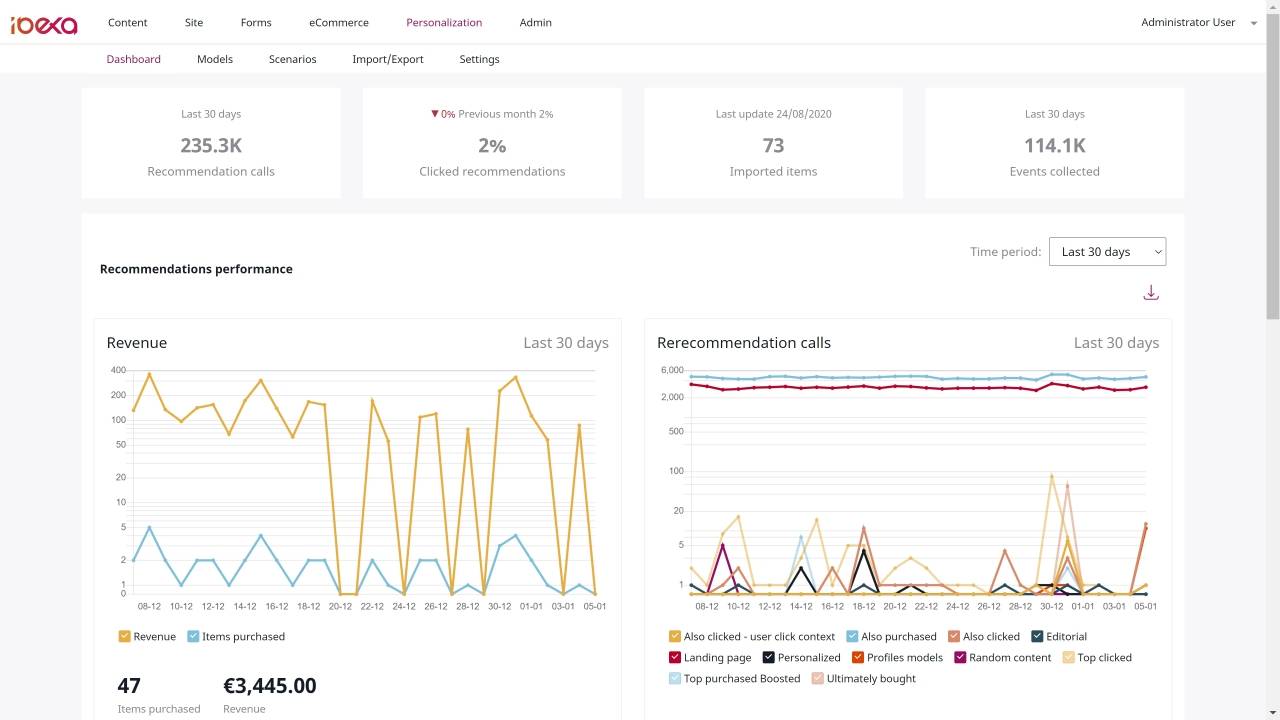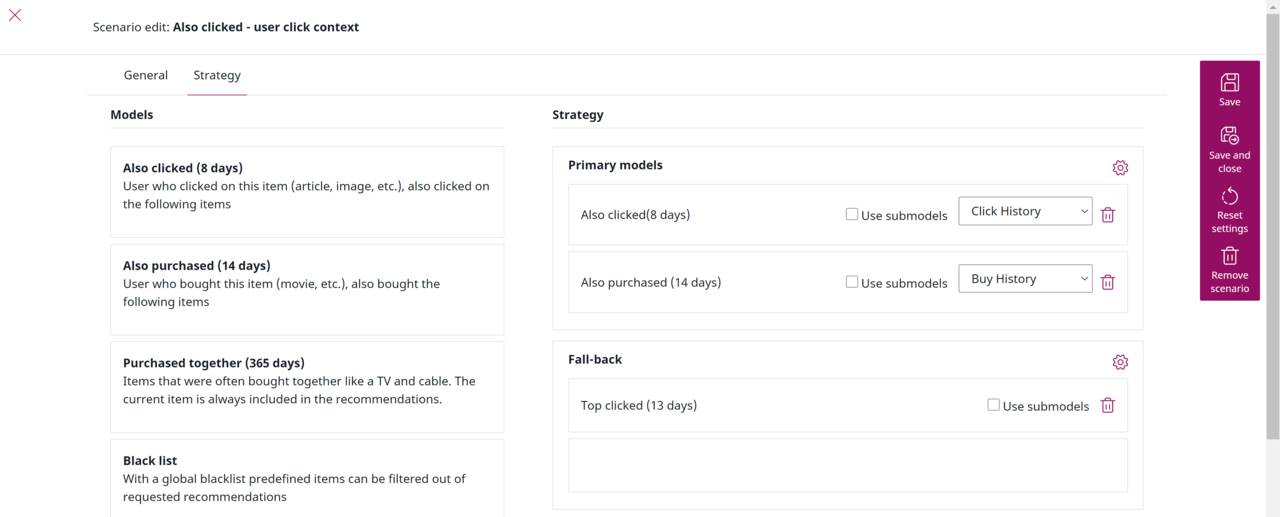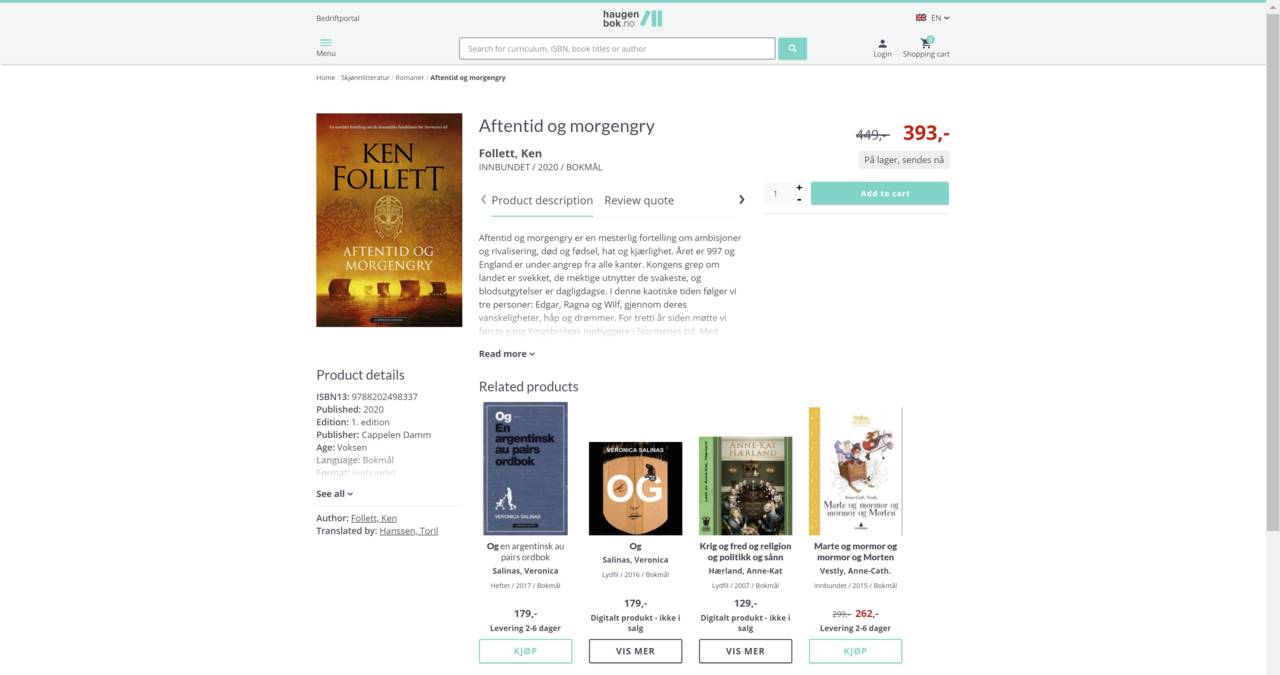Ibexa DXP v3.3 New Feature Preview: Personalization – Simplified and DXP-integrated!

Personalization is all about providing the most relevant content or product recommendations to your target audience or individual users in real time, based on their user behavior or demographic data. With the release of Ibexa DXP v3.3, we relaunch our acclaimed personalization feature in an enhanced and fully DXP-integrated version.
This is the second in a three-part preview blog series offering a sneak peek of new features included in the upcoming launch of our latest software version, Ibexa DXP v3.3, coming soon.
Delivering relevant, targeted content and product recommendations in your digital channels is one of the most straightforward ways to improve customer engagement, build brand trust and – most important – boost your sales. Most people have been presented with personalized web content and targeted advertising for years already, and even though the feeling of being ‘spied on’ may still arise from time to time, the technology has become a valued feature of digital channels. After all, both consumers and professionals appreciate the convenience and efficiency of being recommended content and products that are relevant to them.
In 2019, Ibexa's ten largest DXP Commerce customers increased their sales of items purchased through recommendation by between 7,5% and 20%, generating a total of approximately 70 million euro in added revenue.
Personalization in short
Before we look at the benefits with Ibexa’s improved personalization feature, you may find it helpful with a brief refresher on the topic:
Personalization is based on either user behavior (e.g. clicks, page views, purchases) or demographic data (e.g. location, job role, industry). Furthermore, the term is divided into two sub-categories:
- Implicit personalization presents personalized content or products to a user based on a qualified assumption; ‘Based on X behavior, I believe this user will be interested in Y content or products.’ In most cases it involves behavioral tracking of the user, such as web pages visited, products viewed, products placed in a shopping cart, products purchased, links clicked, or topics searched. By tracking activity from individual sessions and aggregating it, our service builds user profiles that become ‘smarter’ over time. Implicit personalization can generate great upselling results, for instance by offering highly relevant personalized recommendations to customers in a check-out process.
Example of implicit personalization, from Ibexa’s ‘Maison’ demo site.
- Explicit personalization provides an authenticated user with highly relevant content and products by letting the user inform the website of his or her preferences, for example, by filling out a form while creating the user profile. This enables you to store the users’ preferences and inform them about how their personal data will be handled. Editors can create the wanted segments, and explicitly define which content or products to display to which group of users. Explicit personalization can also be based on the geographic location of the user, e.g., a website can present specific content based on a user’s IP address, geographic region, browser, device, or referral traffic source. Explicit personalization requires a platform like Ibexa DXP, which enables you to build the connections between users and content.
A simple web form can collect the data necessary to deliver basic explicit personalization.
You can read more about personalization on our website, learn about the segmentation feature launched with the previous DXP release, and also discover what is personalization and why does it matter?
Introducing the simplified and DXP-integrated personalization feature
One of the pillars of Ibexa DXP is the ‘personalization engine’, which simply explained is the ‘machinery’ that runs our personalization feature. Ibexa has delivered a proven personalization engine for more than a decade already, through a standalone application. In 2019, Ibexa's ten largest DXP Commerce customers increased their sales of items purchased through recommendation by between 7,5% and 20%, generating a total of approximately 70 million euro in added revenue.
With the imminent DXP v3.3 release, we are proud to relaunch the entire personalization interface as an integral part of Ibexa DXP. The enhanced and simplified user interface makes the feature accessible to editors and other content providers in addition to developers. Among many improvements, the most important are:
- As an integral part of the DXP, the personalization feature can be accessed from the DXP’s main menu and requires no additional user logins or permission management.
- The dashboard provides a simple way of monitoring the performance of your personalization settings, with more compacted insights and better data visualization. Statistics include revenue reports from your personalized commerce solution. All reports can be downloaded.
- The use of ‘drag and drop’ makes it easier to configure your personalization settings.
- Statistics and useful information regarding components usage are added to the ‘Models’ and ‘Scenario’ sections.
- Improved recommendation preview functionality.
- Relevant UI templates for different business needs.
With the v3.3 release, Ibexa’s Personalization feature is an integral part of the DXP, accessible from the main menu. The dashboard displays your performance statistics.
Configure your scenario settings in a simpler way
This post will not deep dive into the technicalities of the feature, but well worth mentioning on a basic technical level is the improved way to configure your implicit personalization settings.
The ‘Scenario’ option in the submenu enables you to configure the scenarios (user situations/contexts) in which the different preconfigured personalization ‘Models’ (e.g. ‘also clicked’) are to be used to generate product recommendations or personalized content to the user. The visually enhanced user interface provides an easy drag and drop configuration of your personalization scenarios, where you simply build your scenarios by dragging and dropping available ‘Models’ cards. In addition to the primary models you choose, fallback models should be added to a scenario to avoid empty recommendation boxes being displayed to the user:
The drag and drop configuration of your scenario settings is an enhanced functionality delivered with the DXP v3.3 release.
Out-of-the-box personalization models include:
- Also clicked: Users who clicked on this item (article, image, etc.) also clicked on the following items.
- Top clicked: Most popular content (product, article, etc.) based on a weighted overall usage history.
- Also consumed: User who consumed this content (read article, viewed image, etc.) also consumed the following content.
- Top consumed: Most popular content based on a weighted amount of consumed content.
- Ultimately consumed: User who clicked on this content (article, image, etc.) consumed the following content immediately afterwards.
- Editorial list: Configure static recommendations based on an editorial list.
- History clicked: Show the user what he/she already viewed.
- Top rated: Most popular content based on a weighted number of ratings.
- Similarly rated: Items that were similarly rated by users.
- Blacklist: With a global blacklist, predefined items can be filtered out of requested recommendations.
- Top purchased (DXP Commerce only): Most popular content (product, article, etc.) based on a weighted overall usage history.
- Also purchased (DXP Commerce only): User who bought this item also bought the following items.
- Purchased together (DXP Commerce only): Items often bought together such as a TV and HDMI cable. The current item is always included in the recommendations.
- Ultimately purchased (DXP Commerce only): Users who clicked on this content (articles, images, etc.), also bought the following products.
Norwegian bookseller Haugenbok uses implicit personalization to recommend books based on the user’s previous purchases, books abandoned in their shopping cart, page browsing history and more.
Optimize your sales channels – maximize your revenue opportunities!
Delivering relevant content optimally during a user journey does not have to be complex. Ibexa’s Personalization feature, delivered as an integral service with the DXP v3.3 release, lets you configure sophisticated automated content delivery systems across your digital channels, adapted to each user’s journey. Your revenue opportunities will be maximized through targeted product promotions and you can boost your audience’s engagement with editorial content recommendations. In addition, Ibexa’s Personalization feature enables you to:
- Optimize lead-generation campaigns with relevant contextual content offers
- Track and analyze your user scenarios to learn and develop your targeting strategies and improve engagement
- Track additional e-commerce revenue generated by personalization
- Enrich your customer data by integrating Ibexa’s Personalization feature with existing business systems (CRMs, ERPs, marketing automation)
- Improve customer retention, reduce churn, and deliver better business outcomes with a complete picture of your delivered customer experience.
Ibexa Personalization is available for all Ibexa products, you can try it at no cost. To use it in production, you must purchase the service. Pricing is based on number of personalization API events.
Read more about Ibexa Personalization: Personalize with user choices and behavioral targeting and also the features and pricing of Ibexa’s DXP products and additional services. Visit our Ibexa Personalization page for more information on the feature and also take a look at our capabilities page: What is personalization and why does it matter? as it will give you a greater understanding into why modern B2B customers demand a personalized online experience and how you can respond.
Considerations for Creating Rich Customer Experiences
DXP eBook
If you are struggling with your B2B digital transformation efforts, why not reach out to us to discuss your project. Feel free to download and read Ibexa's eBook on Digital Experience Platforms and the four considerations for creating exceptional customer experiences.





